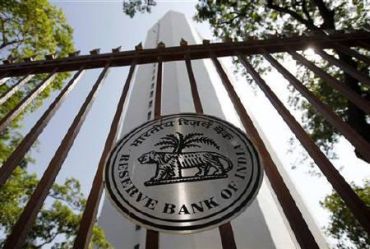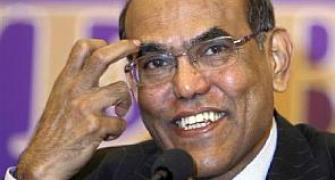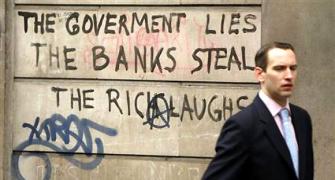 There seem to be several concepts of liquidity floating around. And a distinction is sought to be made between money supply and liquidity, says A Seshan.
There seem to be several concepts of liquidity floating around. And a distinction is sought to be made between money supply and liquidity, says A Seshan.
Nearly a decade ago I suggested that the government could consider auctioning its surplus deposits in the Reserve Bank of India (RBI) among commercial banks, to relieve the shortage of liquidity. I cited the examples of other countries with a similar practice, Malaysia being one of the successful cases.
The Working Group on Operating Procedure of Monetary Policy (2011) headed by Deepak Mohanty made a similar recommendation. The RBI has approached the government seeking its concurrence for the proposal.
One view is that the auctioning of deposits will not make any difference to the liquidity shortage since, instead of borrowing from the Liquidity Adjustment Facility (LAF) through a repurchase agreement, banks will be getting the funds from some other window. But then there is a qualitative difference in alleviating the problem of liquidity in the two cases. For repo operations banks have to offer collateral.
Hence only those banks that have surplus securities under the Statutory Liquidity Ratio (referred to as “surplus banks” hereafter) can avail of the facility; the others cannot. In fact, it is this that enables the surplus banks to exploit the situation, and take advantage of arbitrage opportunities available for re-lending in the call money market, ploughing in the regular banking business, investing in government securities and perhaps doing speculative forex transactions.
The LAF is meant for meeting temporary cash-flow problems and not for those of longer duration. Ironically, it is now utilised by banks that have surplus resources invested in SLR securities for long periods. The recycling of repo funds day after day makes a mockery of the LAF, turning it into a refinance window.
If there is an auction of government deposits, those banks that do not have surplus securities can benefit if they do not have to offer collateral. In fact, there already are large amounts of deposits of Central and state governments in banks. According to the RBI survey of ownership of commercial bank deposits, as of end-March, 2010, Rs 3,06,800 crore was owned by them. There is no collateral required for these deposits, as the government is like any other depositor.
From the point of view of the government, deposits in banks will earn interest on funds unlike those in the RBI. One may argue that interest receipts from repo operations also go to the government at the end of the year in the form of surplus income transferred by the RBI. But it is likely that the rate in the auction is likely to be higher than that of repos, because those banks that are in need of money
The surplus banks will bid at a rate less than that of the repo. But the fundamental point is that repos create money even if they compensate for what is withdrawn from the system through, say, tax payments, contributing to the overhang of liquidity. Auctioning of government deposits only returns the money to the system.
I have a feeling that the arbitrage opportunity is one reason why banks have excess SLR securities that do not have the same provisioning requirements as in the case of loans. If excess funds are invested in securities, it leads to a reduction in possible lending that in turn will affect the growth of deposits through the multiplier effect.
The RBI may think of fixing a ceiling on the holdings of SLR securities besides the existing minimum. Banks cannot complain that they do not have avenues for the deployment of surplus funds, since the reverse repo window is available.
There seem to be several concepts of liquidity floating around. And a distinction is sought to be made between money supply and liquidity. One senior official of the RBI recently said that the cash reserve ratio (CRR) is a monetary policy instrument and not a liquidity management tool. Still, every time there is a cut in the CRR, the RBI tells us how much primary liquidity is injected into the system!
In the past, under the earlier management, the RBI reviews used to estimate the overhang of liquidity comprising balances under LAF, the market stabilisation scheme and surplus government balances with the RBI.
Though surplus SLR securities should have been included, as argued by me, it was not done for unknown reasons. But recently, in defending the decision not to cut the CRR, the RBI governor is reported to have said that “there is Rs 5 trillion of liquidity that banks can access” - Rs 3.5 trillion, he explained, in excess of statutory liquidity requirement holdings, Rs 21,000 crore in unutilised export credit refinancing and Rs 1.4 trillion in marginal standing facility.
Nor do open market operations help banks that do not have surplus securities to sell to the RBI under buy-back. Again, OMOs help only those banks that have excess SLR investments to exploit arbitrage opportunities.
Significantly, the Deepak Mohanty Committee Report pointed out that recent experience had suggested that the response to the RBI’s debt buyback was less than expected even under high liquidity shortage conditions. It said that market participants preferred to access the RBI’s LAF window rather than meet their liquidity needs through OMOs. In fact, it is time for a review committee to be appointed to go into the working of the LAF for possible fine-tuning. The RBI needs to announce the concept of liquidity that underpins its policy.
The writer was officer in charge of the department of economic analysis and policy at the RBI.










